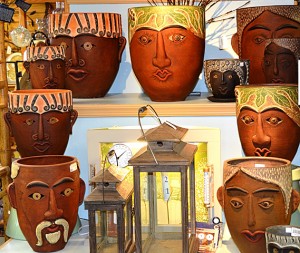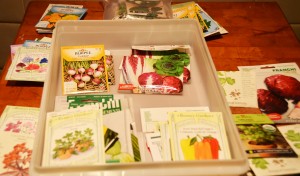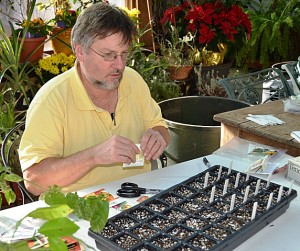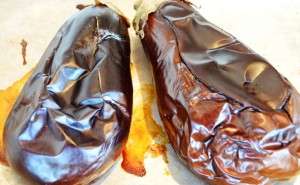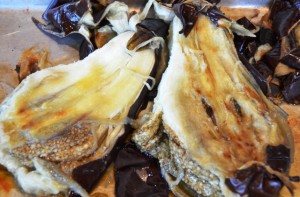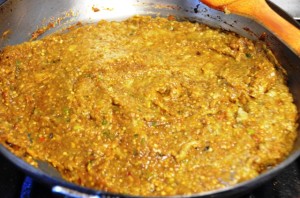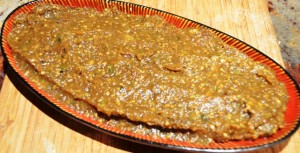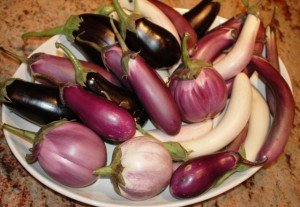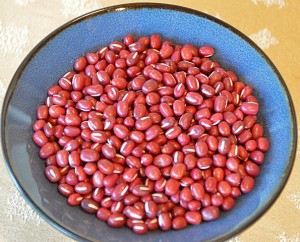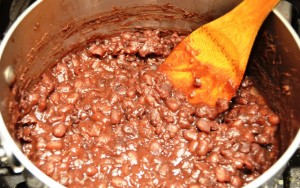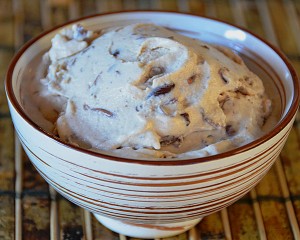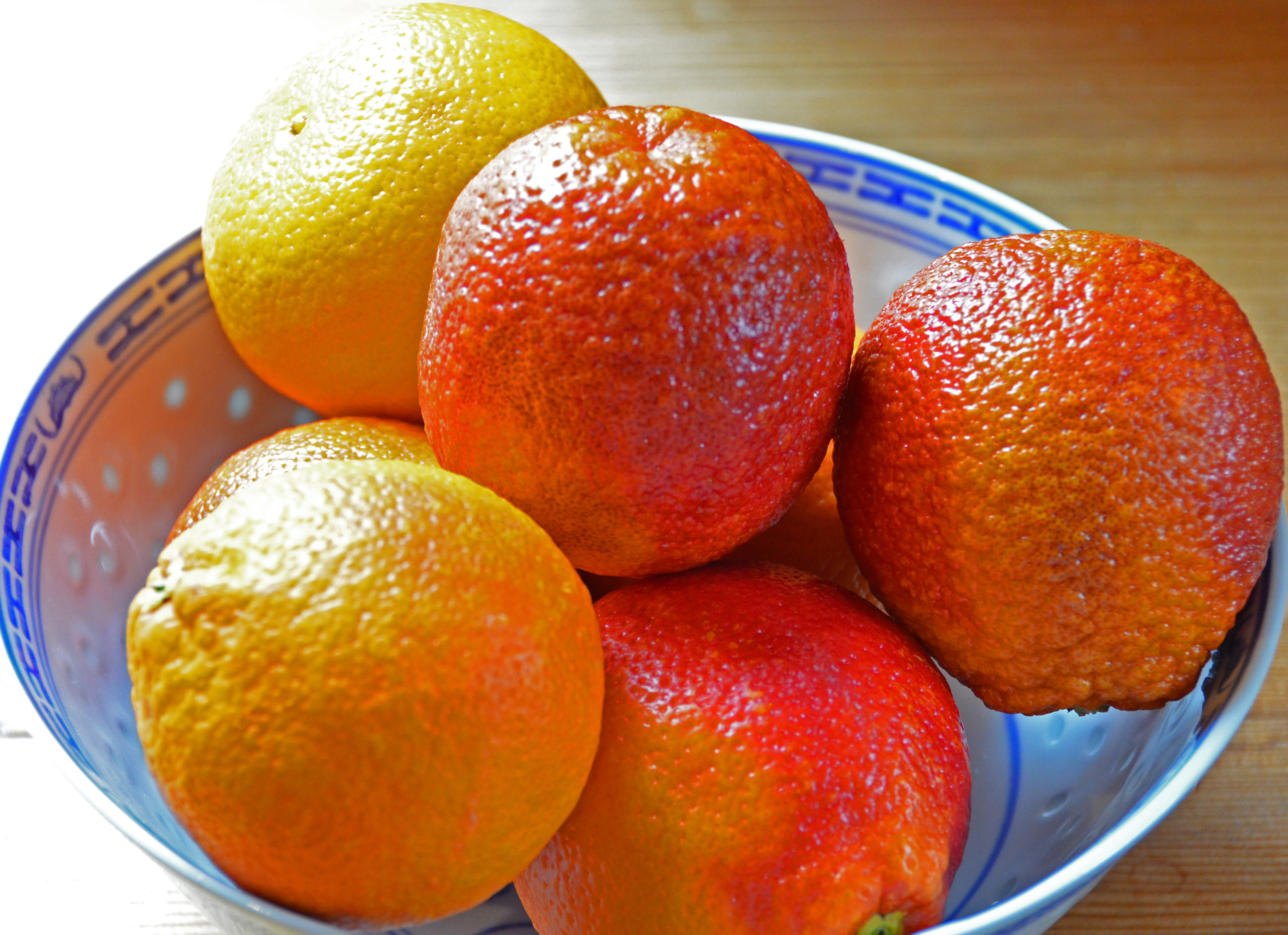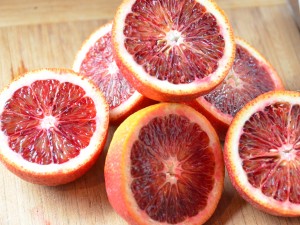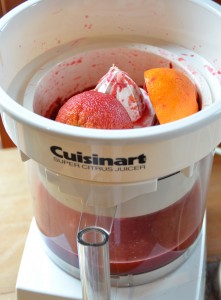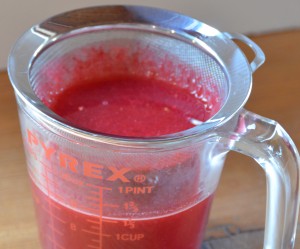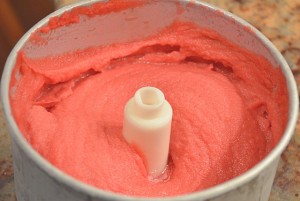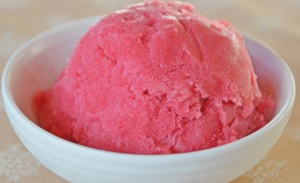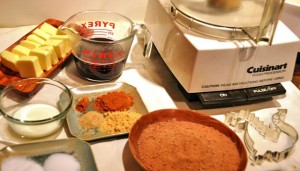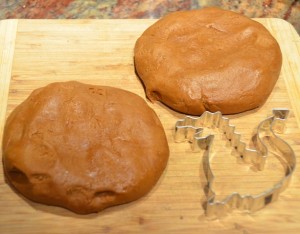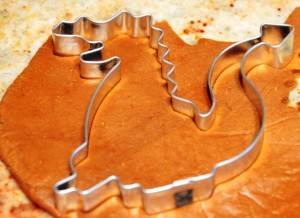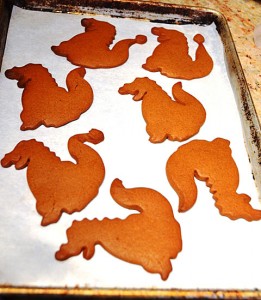Clay Pot Lamb-written before the Chinese New Year celebration 2011
The Christmas decorations have long been stored away, the tree, untrimmed, outside the conservatory door waiting for its tractor ride down to the compost pile, a thick blanket of snow on the ground. That could only mean one thing; our annual Chinese New Year party is only a week and a half away.
Our past celebrations have feted the dog, pig, rat, ox and tiger and this is the year of the rabbit. Some aspects of the menu remain the same, barbecued pork buns-steamed this year, spring rolls, dumplings in the form of pot stickers and steamed “cook and sell”.
We always have three entrees, Festival Fish is a perennial favorite, a return this year to Peking duck and since our acquisition last year of a trio of clay pots, we wanted to choose an entrée that could be cooked in one. Last year we made Lamb Shanks with Plum Sauce, a dish that only took a few minutes to prep but slow cooked for hours. The goal this year would be the same, a dish that would languish on the stove while we were busy with other tasks. Clay or sand pots date back to antiquity when Chinese kitchens had no ovens, only a fire to cook over. The pots are beige in color, banded with wire crosshatching with a smooth brown interior. They need to be treated before their initial use, soaked overnight in cold water, drained the next day, filled with cold water, brought slowly to a boil, and then drained. The pot is now ready for use.
The dish I decided to experiment with is the simply named, Lamb Stew in a Clay Pot. According to author Eileen Yin-Fei Lo, the stew is a representative dish of Xi’an, a region renown for its lamb cookery. Lemon leaves and sugar cane make this dish distinctively from Xi’an. I sat down with the recipe, checking to see what I needed to purchase and what was already a part of my growing Asian pantry. Bean sauce, dried black mushrooms, Chinese white rice wine, check. Leeks, fresh ginger, sugarcane were part of the shopping list. The lamb to be used in this recipe was leg of lamb, cut into three slices across the bone by the butcher.
This is where our problem began. List in hand we hit the local Wegmans. I almost knew I wouldn’t find the bean curd sticks called for in the recipe, which would probably require a trip to Chinatown in Philly. I was pleasantly surprised to find sugarcane, courtesy of Melissa’s, a specialty produce company. No fresh water chestnuts or bamboo shoots, but I knew I had some canned ones at home. Dried tangerine peel, I just substituted Clementine peel, a Clementine is in the same family as the tangerine.
Now for the lamb, Joe was at the meat counter, ordering some Flintstone style t-bones to cook that evening on the fireplace grill. I found a bone-in leg of lamb, a bit larger than what the recipe called for, but fine, none the less. I walked toward the meat counter, only to hear my husband say “Nooo”. He would do this himself, thank you very much. No big deal. I didn’t see what the problem was; the meat guy has an electric band saw and could make short work of the piece of meat. But I didn’t want to hurt Joe’s feelings.
The next day we proceeded to make the recipe. The bone proved to be too much for our knives, so out came our newest kitchen tool, a hacksaw that he cleaned off and sprayed with Pam.

It did the trick; bone and meat were separated, and then marinated in ginger, white rice wine, salt and sugar. I prepped the “mis en place” and we were ready to go. A quick stir-fry and then into the clay pot. An hour and a half later, meltingly tender lamb with some unique flavors. It turned out to be a delicious dish that tastes even better the next day. It will be a welcome addition to our New Year’s Menu.

Adapted from The Chinese Kitchen, Eileen Yin-Fei Lo author
Lamb Stew in a Clay Pot
Makes 10 servings
- 3 lbs butt end of leg of lamb, cut into 3 equal slices across the bone by the butcher
For the Marinade:
- 1 T ginger juice mixed with 2 T Chinese white rice wine or gin
- 1 ½ t salt
- 1 ½ t sugar
- Pinch freshly ground white pepper
To cook the lamb:
- 2T peanut oil
- Six ½ inch thick slices ginger
- 3T bean sauce
- ½ lb leeks, white parts only, well washed cut into 1 ½ inch julienne
- ½ c Chinese white rice wine or gin
- 2 ½ cups or more if needed, Chicken stock
- 12 small Shiitake mushrooms, soaked in hot water for 30 minutes, washed and stems removed
- 3T oyster sauce
- 8 1×2” pieces of tangerine or Clementine peel
- ¼ lb fresh water chestnuts or jicama, peeled and cut into ¼” slices
- 2c bamboo shoots in 1 inch cubes
- 1 9 inch long stalk fresh sugarcane, outer skin peeled, cut into three pieces and each piece quartered lengthwise
- 4 dried Kaffir lime leaves
- ½ t salt
1. If not done by the butcher, cut the lamb in three equal pieces across the bone. Separate the meat from the bone. Trim the fat and discard. You should have 1 ½ pounds of meat. Cut the meat into 1 ½ inch cubes. In a large bowl, combine cubed lamb and bone with the marinade ingredients. Allow to rest at room temperature for 2 hours. Separate the lamb and bone from the marinade and reserve separately.
2. Heat a wok over high heat for 1 minute. Add peanut oil and swirl to coat the surface. When a wisp of white smoke appears, add the ginger, stir and cook for 20 seconds. Add the bean sauce and leeks and cook, stirring for 1 minute. Add the lamb and bone, stir, and cook for 1 minute. Add the wine, stir, and cook for another minute. Turn off the heat and transfer ingredients to a clay pot
3. Add the stock, mushrooms, oyster sauce, tangerine peel, water chestnuts, bamboo shoots, sugarcane and kaffir lime leaves. Mix together thoroughly. Ingredients should be covered by liquid, if not, add more stock to cover. Cover and bring to boil over medium heat. Lower heat to a simmer, in a clay pot for 1½ hours. A regular pot, with a lid cracked will take a little longer. Stir the contents frequently during cooking. The meat should be tender. Taste to see if salt is needed. Turn off heat. If using a clay pot, serve at the table. Otherwise transfer the contents to a heated tureen and serve as a stew in individual bowls.
The author also mentions that this dish is usually served with a green vegetable such as Chinese broccoli with fried onions.
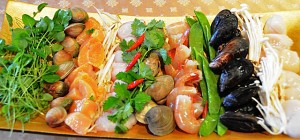
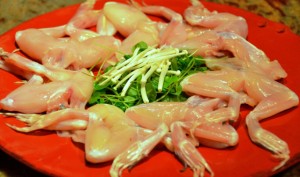
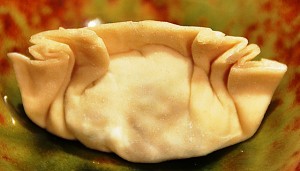
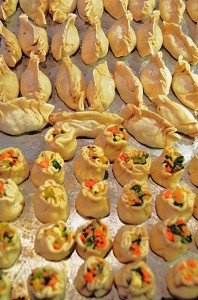
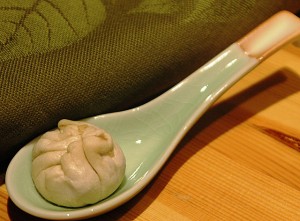
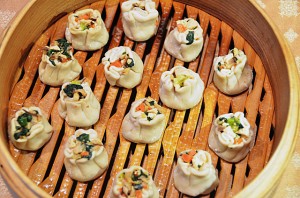

 Joe making his selections
Joe making his selections
